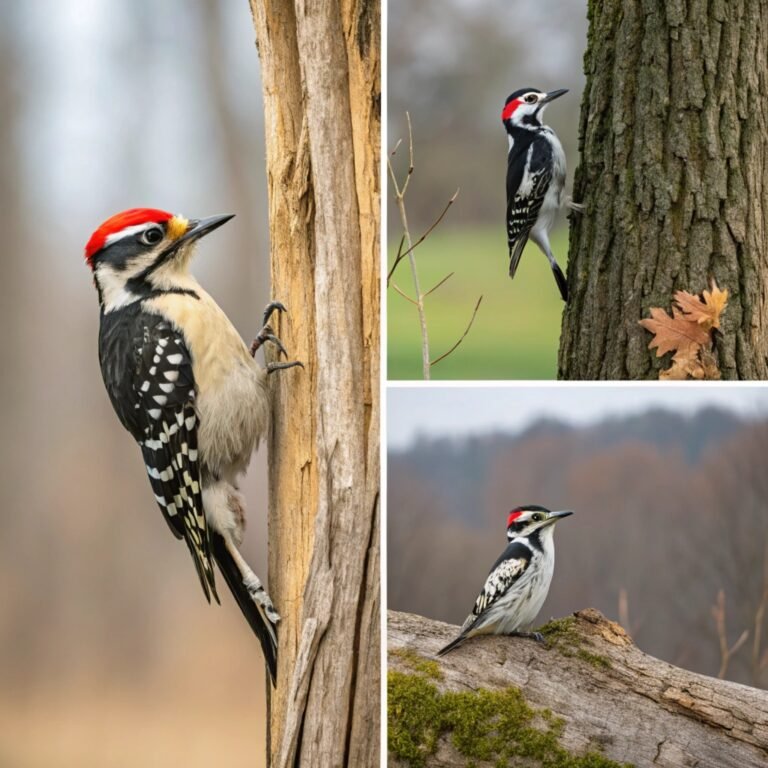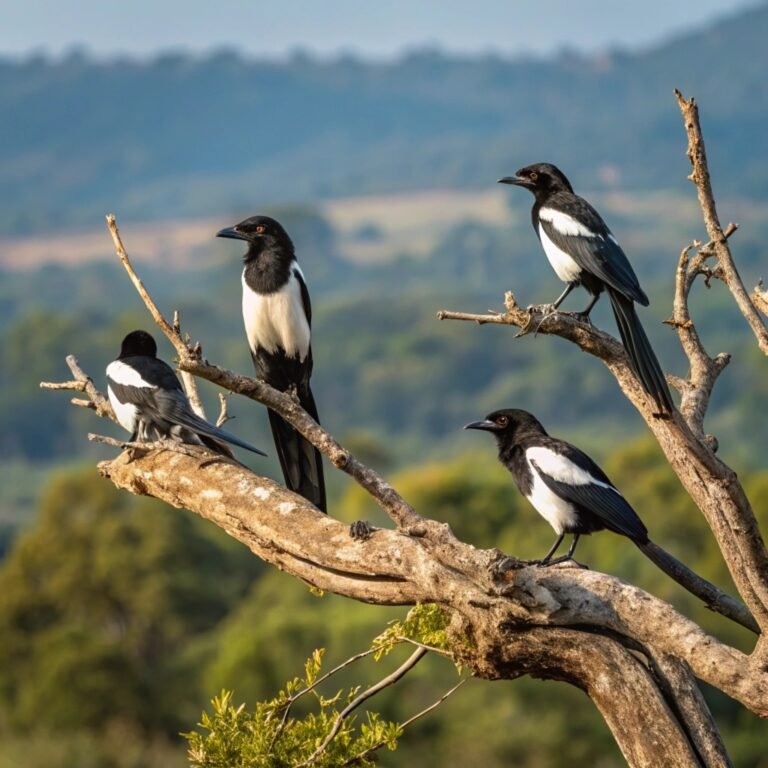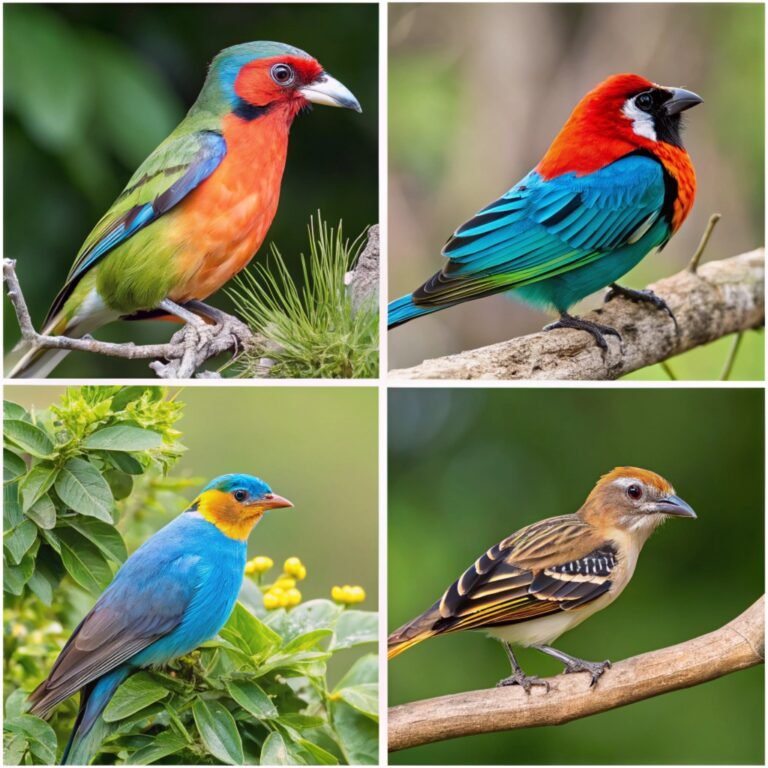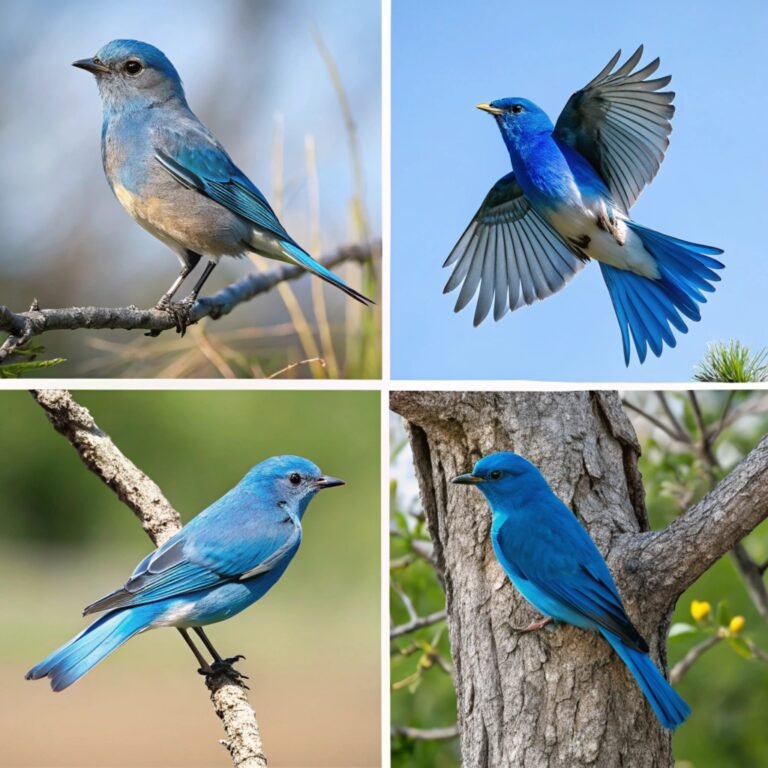12 Highest-Flying Bird Species on Earth and Their Remarkable Aerial Feats
In the vast expanse of our planet’s skies, certain bird species have evolved to reach astonishing altitudes, pushing the boundaries of avian flight.
These remarkable creatures have adapted to navigate thin air, extreme temperatures, and challenging weather conditions, showcasing nature’s incredible ability to conquer even the most inhospitable environments.
From vultures soaring over African savannas to geese crossing the world’s highest mountain ranges, these high-flying birds demonstrate the extraordinary capabilities of winged creatures.

Key Takeaways:
- The Rüppell’s Griffon Vulture holds the record for the highest flying bird, reaching altitudes of up to 37,000 feet.
- Many high-flying birds have special adaptations to cope with low oxygen levels and extreme cold at high altitudes.
- Migration patterns often drive birds to fly at extreme heights, allowing them to take advantage of favorable wind currents.
- The Bar-headed Goose is renowned for its ability to cross the Himalayas at altitudes exceeding 29,000 feet.
- Some birds, like the Common Crane, fly at high altitudes to avoid predators during their long-distance migrations.
- Whooper Swans have been recorded flying at heights of 27,000 feet during their seasonal journeys.
- The Alpine Chough is adapted to life in high mountain ranges and can fly at altitudes up to 26,500 feet.
- Andean Condors use thermal currents to soar effortlessly over the rugged terrain of South America at heights over 21,000 feet.
- Even common species like the Mallard can reach impressive altitudes of up to 21,000 feet during migration.
- High-altitude flight requires significant energy expenditure and specialized physiological adaptations.
- Some high-flying birds have enhanced hemoglobin that allows them to extract more oxygen from the thin air at extreme altitudes.
- The ability to fly at great heights often correlates with impressive long-distance migration capabilities.
1. Rüppell’s Griffon Vulture: The Undisputed Champion of High-Altitude Flight

The Rüppell’s Griffon Vulture (Gyps rueppellii) reigns supreme as the highest-flying bird on Earth, with a recorded altitude of an astounding 37,000 feet (11,300 meters).
This critically endangered species, native to the Sahel region of central Africa, has evolved remarkable adaptations to soar at heights comparable to commercial aircraft.
These vultures possess keen eyesight that allows them to scan vast areas from extreme altitudes, efficiently locating food sources on the ground below.
Their ability to fly at such heights is not just a impressive feat but also a survival strategy, enabling them to cover extensive territories in search of carrion.
Unfortunately, the Rüppell’s Griffon Vulture faces significant threats, with a declining population of around 30,000 individuals.
Habitat destruction and poisoning, often as an unintended consequence of elephant poaching, pose serious risks to this extraordinary species’ survival.
2. Common Crane: Soaring High Above Predators

The Common Crane (Grus grus) is another remarkable high-flyer, with sightings reported at altitudes of up to 33,000 feet (10,000 meters) while crossing the formidable Himalayas.
These elegant birds breed in the northern parts of Europe and Asia and undertake impressive migrations to wintering grounds in northern Africa, southern Europe, and parts of Asia.
Their ability to reach such extreme heights serves a crucial purpose: avoiding predatory eagles that might otherwise pose a threat during their long-distance journeys.
This strategy showcases the evolutionary adaptations that enable the Common Crane to navigate safely through potentially dangerous airspace.
Common Cranes are known for their coordinated migrations, often flying in distinctive V-formations that help conserve energy during their arduous journeys.
Their capacity to fly at high altitudes is a testament to their physical endurance and the remarkable adaptations that allow them to thrive in the thin air of extreme elevations.
3. Bar-Headed Goose: Conquering the Roof of the World

The Bar-headed Goose (Anser indicus) is renowned for its ability to fly over the world’s highest mountain ranges, including the mighty Himalayas.
These incredible birds have been observed soaring at altitudes of up to 29,500 feet (9,000 meters), making them one of the highest-flying bird species on the planet.
What makes this feat even more impressive is that Bar-headed Geese fly over the Himalayas during their bi-annual migrations between their breeding grounds in Central Asia and wintering areas in the Indian subcontinent.
This journey takes them over some of the most challenging terrains and weather conditions on Earth.
To accomplish this remarkable feat, Bar-headed Geese have evolved several physiological adaptations. They possess hemoglobin with a higher oxygen affinity, allowing them to extract more oxygen from the thin air at high altitudes.
Additionally, their lungs are more efficient at oxygenating their blood, enabling them to maintain the energy required for sustained flight in such extreme conditions.
4. Whooper Swan: Graceful Giants of the Sky

The Whooper Swan (Cygnus cygnus) is a majestic bird that has been recorded flying at impressive altitudes of up to 27,000 feet (8,200 meters).
These large waterfowl are known for their long-distance migrations between their breeding grounds in subarctic Eurasia and wintering areas in southern Europe and eastern Asia.
In December 1967, a remarkable sighting occurred near Lough Foyle, where a formation of 30 Whooper Swans was observed by a pilot flying at an altitude just over 8,200 meters.
This height was later confirmed by air traffic control radar, solidifying the Whooper Swan’s place among the world’s highest-flying birds.
Whooper Swans employ clever strategies during their high-altitude flights. They often fly at these extreme heights to avoid snow squalls at lower altitudes and take advantage of strong wind currents.
These favorable conditions allow them to achieve speeds of around 200 km/h, enabling them to complete long journeys, such as the 1,290 km flight from Iceland to Scotland or Ireland, in just under 7 hours.
5. Alpine Chough: Master of Mountain Skies

The Alpine Chough (Pyrrhocorax graculus), also known as the yellow-billed chough, is a high-altitude specialist that has been observed flying at elevations of up to 26,500 feet (8,000 meters).
These agile birds are members of the crow family and are perfectly adapted to life in some of the world’s most challenging mountain environments.
Found in the mountainous regions of Europe, northern Africa, and Asia, Alpine Choughs have even been spotted flying over the tallest Himalayan peaks, including Mount Everest.
Their ability to thrive at such extreme altitudes is a testament to their remarkable adaptations.
One fascinating aspect of Alpine Chough biology is their eggs, which have evolved to tolerate the lack of oxygen in the thin atmosphere at high altitudes.
This adaptation ensures that their offspring can develop successfully in the harsh mountain environments where these birds make their homes.
6. Bearded Vulture: The Bone Crusher of High Altitudes

The Bearded Vulture (Gypaetus barbatus), also known as the lammergeier, is a magnificent bird of prey that has been recorded flying at heights of up to 24,000 feet (7,300 meters).
These impressive raptors are found in mountainous regions across Asia, Africa, and Europe, including the Himalayas, Alps, Pyrenees, and Altai Mountains.
Bearded Vultures are uniquely adapted to life at high altitudes and are rarely spotted below 3,300 feet (1,000 meters).
Their diet primarily consists of bone marrow, which they obtain by dropping large bones onto rocks to break them open, earning them the nickname “bone crusher.”
These vultures play a crucial role in their high-altitude ecosystems, cleaning up carcasses and recycling nutrients.
Their ability to fly at extreme heights allows them to cover vast territories in search of food, making them efficient scavengers in some of the world’s most remote and challenging environments.
7. Andean Condor: South America’s High-Flying Giant

The Andean Condor (Vultur gryphus) is one of the largest flying birds in the world and a master of high-altitude flight, capable of soaring up to 21,300 feet (6,500 meters) above sea level.
Native to the Andes Mountains of South America, these impressive birds have adapted to life in some of the most rugged and inhospitable terrains on the planet.
With a wingspan that can reach up to 10 feet 10 inches (3.3 meters), Andean Condors are perfectly built for soaring on thermal currents.
This ability allows them to cover vast distances with minimal energy expenditure, an essential adaptation for survival in the harsh Andean environment.
Andean Condors play a vital role in their ecosystem as efficient scavengers, helping to clean up carrion and prevent the spread of disease.
Their ability to fly at high altitudes enables them to spot food sources from great distances, making them an essential component of the Andean food chain.
8. Mallard: The Surprising High-Flyer

While often associated with ponds and lakes, the common Mallard (Anas platyrhynchos) has been observed flying at surprisingly high altitudes of up to 21,000 feet (6,400 meters) during its long-distance migrations.
This revelation challenges our perceptions of what these familiar ducks are capable of achieving.
Mallards are known for their extensive migratory routes, which can span across continents. Their ability to reach such high altitudes during these journeys is a testament to their adaptability and endurance.
This high-altitude flight capability allows Mallards to take advantage of favorable wind patterns and avoid obstacles during their long-distance travels.
The fact that such a common species can achieve these impressive altitudes serves as a reminder of the hidden capabilities of birds we often take for granted.
It also highlights the importance of considering the three-dimensional nature of bird migrations when studying and conserving these species.
9. White Stork: Europe’s High-Flying Migrant

The White Stork (Ciconia ciconia) is a large, distinctive bird known for its impressive migratory journeys between Europe and Africa.
These elegant creatures have been recorded flying at altitudes of up to 16,000 feet (4,800 meters) during their long-distance travels.
Breeding in Europe, southwestern Asia, and parts of Africa, White Storks undertake remarkable migrations to reach their wintering grounds in sub-Saharan Africa and the Indian subcontinent.
Interestingly, these birds avoid crossing the Mediterranean Sea directly, instead taking a detour via the Levant to minimize the time spent over open water.
White Storks’ ability to fly at high altitudes allows them to take advantage of thermal currents and favorable winds, making their long journeys more energy-efficient.
This adaptation is crucial for their survival, enabling them to cover vast distances between their breeding and wintering grounds with greater ease.
10. Bar-Tailed Godwit: The Marathon Flyer

While not reaching the extreme altitudes of some other species on this list, the Bar-Tailed Godwit (Limosa lapponica) deserves mention for its incredible long-distance, non-stop flights.
These birds have been recorded flying at altitudes of up to 20,000 feet (6,000 meters) during their marathon migrations.
Bar-Tailed Godwits are known for making the longest non-stop flights of any bird, with some individuals flying over 7,000 miles (11,000 kilometers) without rest.
This feat requires them to fly at various altitudes to take advantage of different wind patterns and weather conditions.
The ability to fly at high altitudes is crucial for these birds during their long-distance journeys, allowing them to navigate efficiently and conserve energy.
Their remarkable endurance and navigational skills make the Bar-Tailed Godwit one of the most impressive migratory birds in the world.
11. Eurasian Griffon Vulture: Europe’s High-Altitude Scavenger

The Eurasian Griffon Vulture (Gyps fulvus) is another impressive high-flying bird, capable of reaching altitudes of up to 37,000 feet (11,300 meters), rivaling its African relative, the Rüppell’s Griffon Vulture.
These large birds of prey are found across Europe, North Africa, and parts of Asia.
Eurasian Griffon Vultures have adapted to life at high altitudes, with physiological changes that allow them to function effectively in low-oxygen environments.
Their keen eyesight enables them to spot carrion from great heights, making them efficient scavengers in their ecosystems.
These vultures play a crucial role in their habitats by cleaning up carcasses and recycling nutrients.
Their ability to fly at extreme altitudes allows them to cover vast territories in search of food, contributing to the health of their ecosystems across wide geographical areas.
12. Golden Eagle: The Majestic Mountain Predator

The Golden Eagle (Aquila chrysaetos) is a powerful bird of prey known for its ability to fly at high altitudes, with some individuals recorded soaring up to 20,000 feet (6,100 meters).
These majestic birds are found across North America, Europe, and Asia, often inhabiting mountainous regions.
Golden Eagles are perfectly adapted for life at high altitudes, with large wings that allow them to soar effortlessly on thermal currents.
Their exceptional eyesight enables them to spot prey from great heights, making them formidable hunters in their mountain habitats.
The ability to fly at high altitudes gives Golden Eagles a significant advantage in their rugged environments. It allows them to survey vast territories for prey and to navigate challenging mountain terrains with ease.
This adaptation has helped Golden Eagles become one of the most successful and widely distributed eagle species in the world.
Frequently Asked Questions
What adaptations allow birds to fly at such high altitudes?
Birds that fly at extreme altitudes have evolved several physiological adaptations. These include more efficient respiratory systems, hemoglobin with higher oxygen affinity, and larger wing spans relative to body size. Some species also have the ability to lower their metabolic rate during flight to conserve energy in the thin air.
How do high-flying birds navigate at such extreme altitudes?
High-flying birds use a combination of visual cues, magnetic sensing, and possibly even star navigation to orient themselves at extreme altitudes. They also have excellent eyesight that allows them to spot landmarks from great heights, aiding in navigation during long-distance flights.
Are there any risks associated with flying at such high altitudes for birds?
Yes, flying at extreme altitudes poses several risks for birds. These include exposure to very low temperatures, reduced oxygen levels, and the potential for rapid decompression. Additionally, high-altitude flight requires significant energy expenditure, which can be challenging for birds during long migrations.
Do all bird species have the ability to fly at high altitudes?
No, not all bird species can fly at high altitudes. The ability to reach extreme heights is a specialized adaptation found in certain species, particularly those that undertake long-distance migrations or live in mountainous regions. Many birds are adapted to fly at much lower altitudes.
How do scientists study and record the flight altitudes of birds?
Scientists use various methods to study bird flight altitudes, including radar tracking, GPS transmitters attached to birds, and observations from aircraft. In some cases, bird strikes on airplanes at known altitudes have also provided data on the heights at which certain species fly.

Hello, I’m Emily Price, the founder of Birds Affection. As a passionate bird enthusiast and spiritual seeker, I’ve always been fascinated by the symbolic meanings and mystical connections between birds and our lives. On this website, I share my knowledge and insights on the spiritual significance of various bird species, exploring their roles as messengers, guides, and teachers. Through my writing, I aim to inspire and educate others on the profound wisdom and beauty that birds bring to our world. Join me on this journey as we delve into the enchanting realm of bird symbolism and discover the hidden meanings behind these magnificent creatures.







